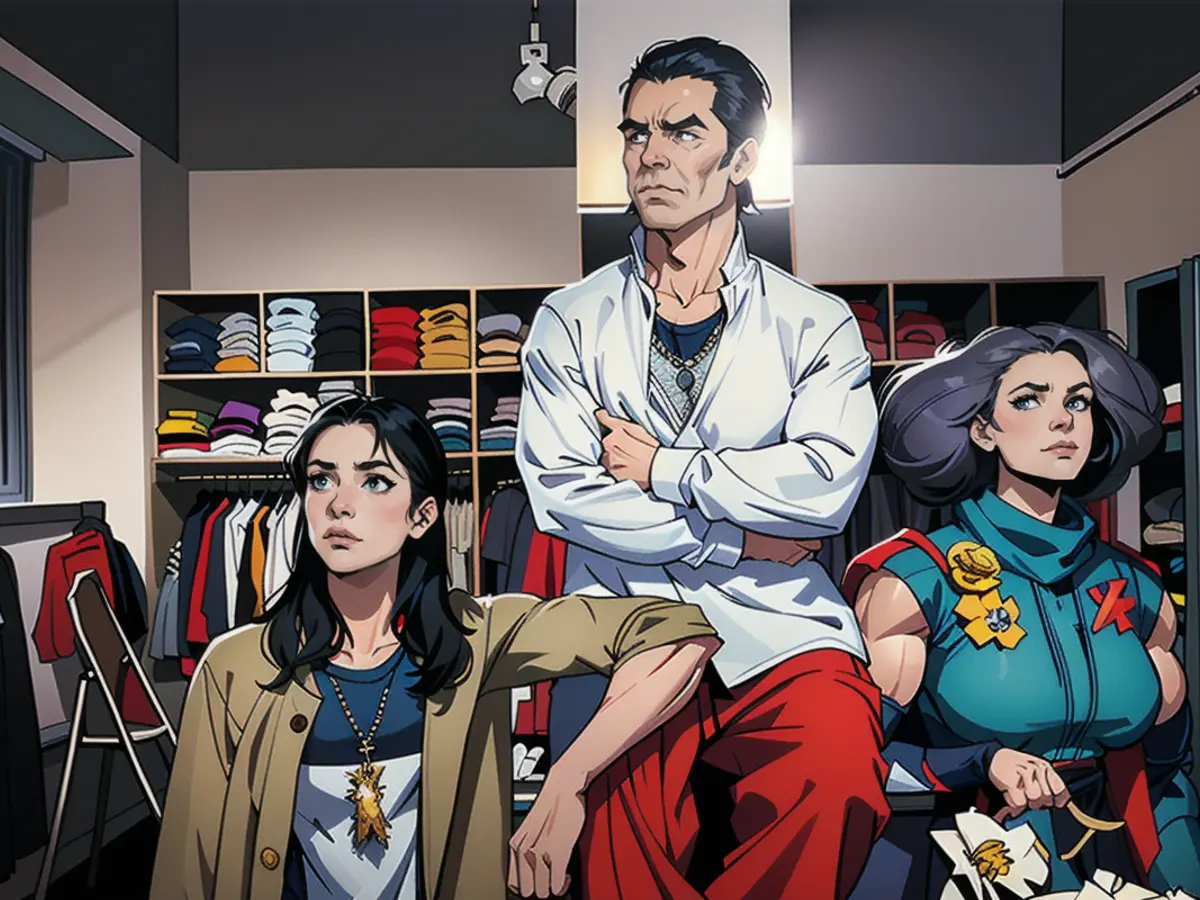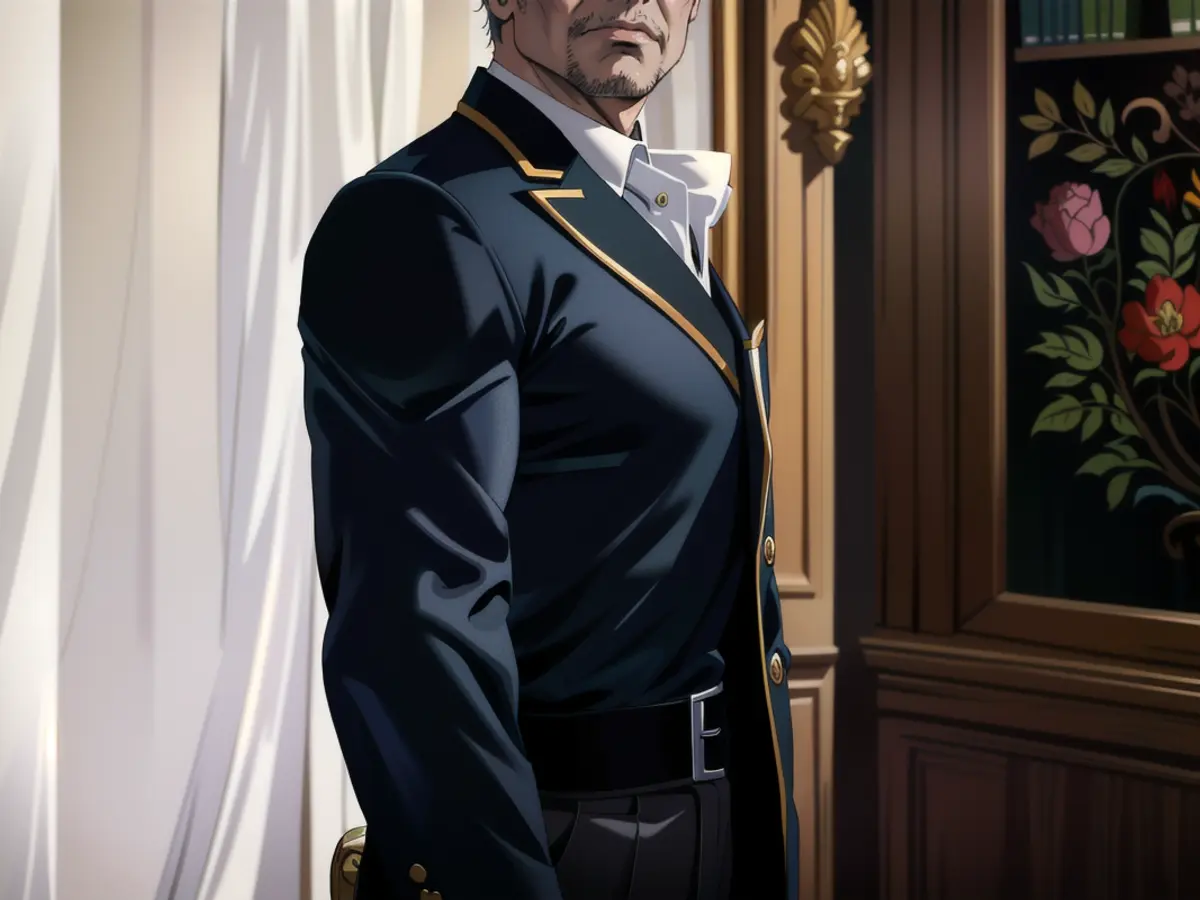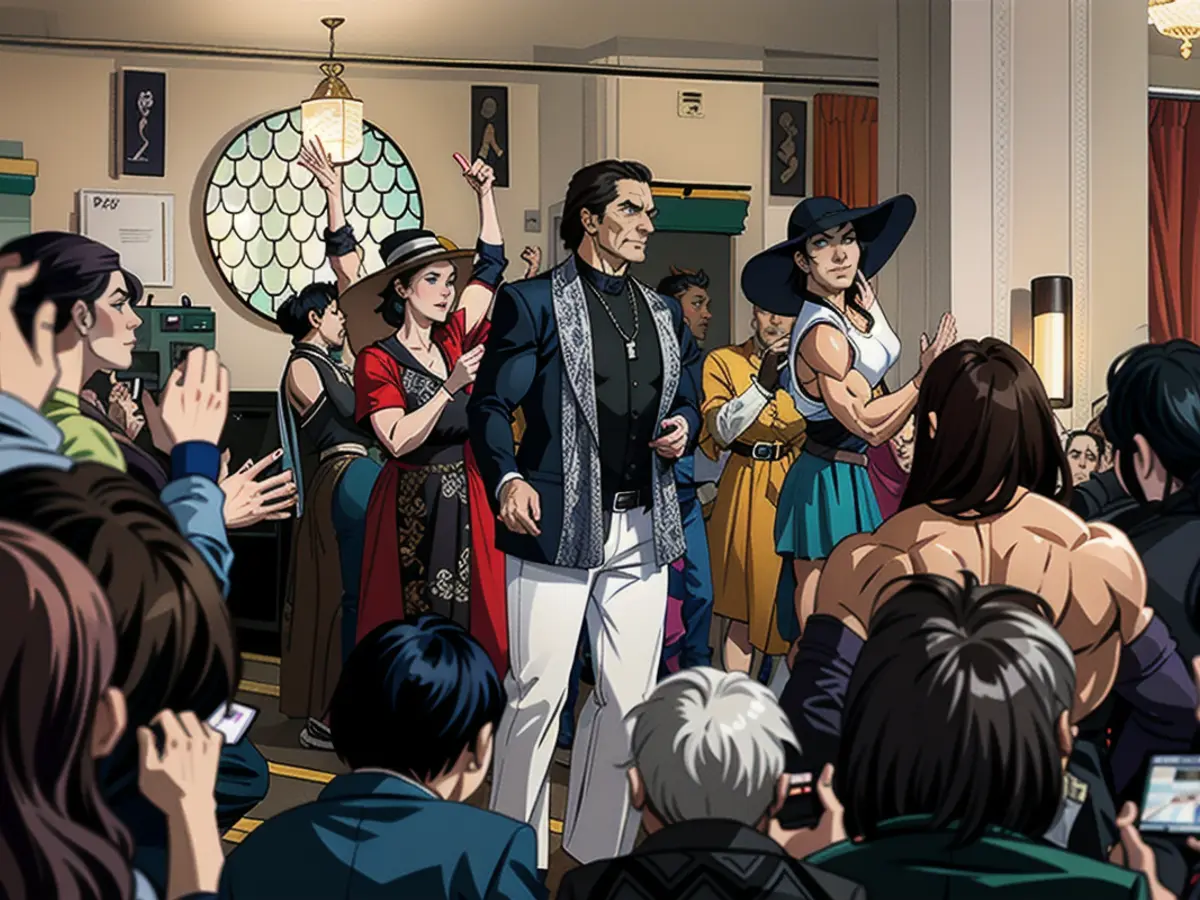"A Complimentary Artwork About the Controversial Karl Lagerfeld"
"Obviously," says de Bacher dryly. "You dress like the Sun King to go unnoticed."
The Sun King was a nickname for King Louis XIV, who reigned over 17th and 18th century France in a procession of oversized sleeves, flowing ruffles, and intricate fabric patterns.
Although he doesn't wear a dark wig, de Bacher's comparison isn't off base. His wardrobe - resembling that of Caesar Flickerman from The Hunger Games - is full of flared pants and elaborate tie pins; matched cravats and pocket squares, high-heeled boots, and a vast collection of ties that would make Chuck Bass from Gossip Girl green with envy. His color palette is one of jewel and earth tones: petrol blues and pinstripes. And even though his bow ties and work gloves haven't made an appearance yet, his looks are topped off with his future trademark: a pair of black aviator sunglasses.
Released in 1972, "Becoming Karl Lagerfeld" - which will be available on Hulu on June 7 - explores Lagerfeld's romantic life and career throughout the 70s until the spring of 1981, just before he started working with Chanel in 1983. After joining ready-to-wear powerhouse Chloe in 1966, Lagerfeld became the brand's sole designer in 1974. The series centers on his power struggle with Chloe's founder, Gaby Aghion (played by Agnès Jaoui), who discovered his talent but refuses to showcase his true artistic genius in high-end fashion.
The creators of the series make an intentional choice to portray Lagerfeld in a sympathetic light. In 2023, when the Metropolitan Museum of Art held a gala and exhibition in his honor, critics were quick to point out the countless controversial statements he made about weight, women, immigrants, victims of sexual assault, and gay marriage. In "Becoming Karl Lagerfeld", he is portrayed as brooding, combative, and ambitious, but the audience is encouraged to root for him nonetheless. Instead, it's Saint Laurent who receives the worst press: in the love triangle that forms the plot, he is portrayed as a tortured artist who grovels pathetically over de Bascher, while Lagerfeld remains the aloof scorned lover.

A man's world?
One of the show's standout lines suggests Lagerfeld's sexist views. "Fashion has nothing to do with women, or there wouldn't be so many gay guys in the business," he tells de Bascher at the same YSL show in the first episode. "It's a way of embodying the zeitgeist, of reflecting society's true nature."
Lagerfeld's statement is then directly contradicted by Marlene Dietrich (played by Sunnyi Melles) in the next episode. "A fashion designer is just a mirror for the woman he's dressing..." she tells him bluntly. "You only exist if the reflection in the mirror pleases me."
While these lines may not be exact quotes from the real-life Lagerfeld or Dietrich, they show the ego of Lagerfeld's character and also raise the intriguing question of how gender and power operate within the fashion industry.

Despite Dietrich's objection, the creators of "Becoming Karl Lagerfeld" seem to agree with their muse. Almost all the female characters in the series are portrayed as emotional support or decorative backdrops - canvases from which Lagerfeld and Saint Laurent can hang their art. According to the show, Parisian fashion in the 1970s was a scene controlled mainly by quarreling men.
But the history of high fashion is more complicated than that. Haute couture - where Lagerfeld wanted to make his mark - didn't even exist until 1858, and its introduction disrupted the previous trend of women dressing other women. "The notion of haute couture and the client didn't exist until C.F. Worth," says Claire Wilcox, senior curator of fashion at London's Victoria and Albert Museum. "It was a notable shift in fashion history." Worth opened the first haute couture house, earning the title of 'father' of the industry.
Prior to the arrival of Worth, women were the primary dressmakers. By the time he opened his establishment, women designers had become so commonplace that the idea of a male dressmaker was considered unusual. Joseph Abigail, a historian, described the slurs that met Worth: accusations of effeminacy and "inappropriate masculinity". Pierre Larousse, author of a famed 19th-century encyclopedia, argued that fashion needed "fairy-like fingers, not the build of an athlete, to be practiced properly and decently." [ missed the last line about the author before that ]
In 1889, opinions towards Worth changed significantly as the "Peterborough Express" newspaper referred to his name as synonymous with the center of the fashionable world. Six years later, the "Leitrim Advertiser" said his designs were destined to change the world of feminine dress forever. Towards the end of the 20th century, a surge in couture houses modelled on Worth's example occurred. Although Chanel and Schiaparelli made a name for themselves, the majority of the most prominent fashion designers were men, like Dior and Balmain in the 1940s and Givenchy in 1952.

The following discussions don't extensively cover the context surrounding Worth or his influence on women's fashion, instead shifting focus to Lagerfeld and de Bascher's rocky relationship. "Becoming Karl Lagerfeld" is a lavish homage to '70s style - visually stunning and delving into the personal lives of some of the industry's major players. However, exploring further the issue of gender power dynamics in fashion would have been intriguing.
Read also:
De Bacher's fashion sense, with its extravagant ties and high-heeled boots, can be compared to the styles of 17th and 18th century France, often referred to as the "Sun King" era, known for their ornate fabrics and patterns.
In contrast to Lagerfeld's grandeur, the series "Becoming Karl Lagerfeld" portrays him as a brooding, ambitious figure who seems to prioritize his artistic vision over the needs of his female partners, reflecting some of the controversial views on gender and power within the fashion industry.








